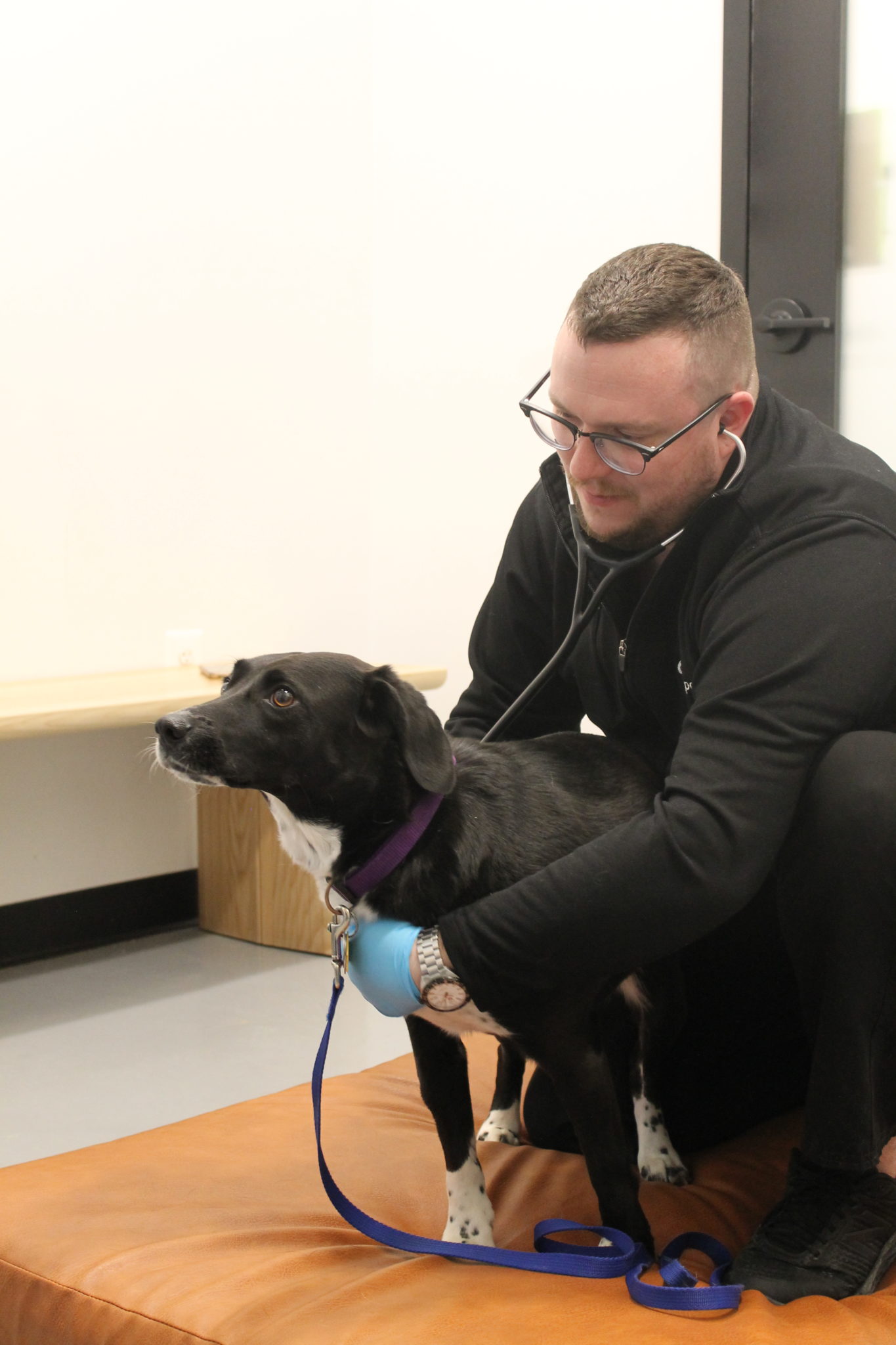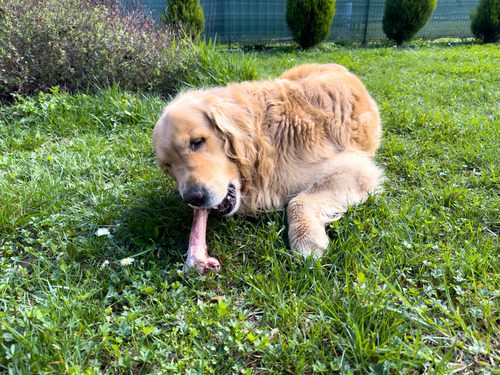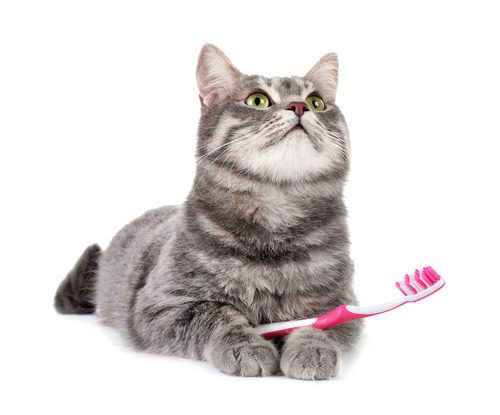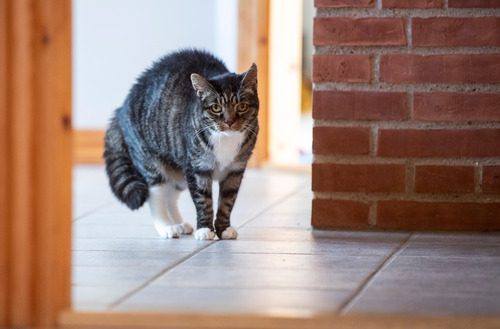Signs of Hip Dysplasia in Dogs Pet Parents Should Look For
Have you ever heard of hip dysplasia in dogs? Hip dysplasia is common in dogs, and some breeds are more prone to it than others. As a pet parent, it’s crucial that you learn how to recognize early signs and symptoms of hip dysplasia so you can protect your pet from this problem ahead of time.

When asked about hip dysplasia in dogs, Heart + Paw’s Chief Veterinary Officer and Founder, George Melillo explains, “While there are surgical corrections for hip dysplasia, there is no cure. So catching the problem early can help your dog live a fuller life with less pain.”
Talk to your veterinarian if you notice any of the signs from our list below.
Signs of Hip Dysplasia in Dogs
The first step in making sure your pet gets the care they need is learning about the common signs of dog hip dysplasia. While some of these symptoms could be caused by different conditions, it’s important to know the signs that your dog may be suffering from this condition. Especially if they’re experiencing more than one of the symptoms mentioned below.
Common signs of hip dysplasia in dogs include:
Decreased Climbing and Jumping Mobility
One of the earliest symptoms most pet owners notice in their dogs with hip dysplasia is an inability or unwillingness to jump or climb. Even dogs who used to be very active may suddenly not want to participate in some of their favorite activities anymore, which is usually a good indicator that something is not quite right. Your dog may seem slower than normal when standing up after a rest.
Swaying Gait
A swaying gait, sometimes seen instead as a bunny hop, is a very early sign of hip dysplasia in dogs. If you can recognize this problem in your pet as soon as it occurs, you can give them a good chance at living a full life with proper treatment for the condition.
Back Leg Lameness
As hip dysplasia worsens, it can lead to completely lameness in the back legs. This sign means your dog has been dealing with hip dysplasia for a long time, but it doesn’t mean they are no longer a candidate for treatment.
Pain
Pain is a telltale sign of hip dysplasia in dogs, although it can also be a sign of a wide range of other problems and conditions that may affect your dog’s mobility too. If your dog favors one side more than the other or sits on one side more often than not, this may mean they are suffering from hip dysplasia related pain.
Stiffness
Stiffness can easily be mistaken for arthritis, especially in older dogs. However, if your dog has other signs of hip dysplasia on this list, or if they are still quite young, there is a chance this stiffness is not related to arthritis.
Dogs who are one to two years of age may show stiffness as an early indicator of hip dysplasia and should be carefully examined if so.
Increased Shoulder Muscle Mass
Another common sign of hip dysplasia in dogs is increased shoulder muscle mass.
As your dog’s hind leg strength weakens, their front legs must compensate for the lack of support from their back legs. When this happens over a long period of time, their shoulder muscles may grow larger than they used to be, signifying that they are putting a lot more weight on them than they once did.
Risk Factors of Hip Dysplasia in Dogs
Now that you know the common signs of hip dysplasia in dogs, you should also be aware of the risk factors of this condition. By knowing the common factors that can lead to this condition, you’ll have a better idea of how likely your pet is to develop this condition.
Below are some important dog hip dysplasia risk factors to be aware of:
Weight
Weight is one of the biggest risk factors in dogs when it comes to hip dysplasia. Since being overweight puts more pressure on the dog’s joints, it is much more likely for overweight or obese dogs to suffer from joint health problems at any point in their lives, including hip dysplasia.
Exercise and Activity Levels
In those dogs with a genetic predilection for this condition, dogs who constantly run, jump, and play on hard surfaces like pavement are more likely to be at risk of hip dysplasia. This is because the hip joint is less stable than in a dog without hip dysplasia and can cause joint changes, such as arthritis.
Similarly, however, dogs who never exercise and aren’t taken on walks often enough are also likely to develop this problem.
It is important to find the “sweet spot” when it comes to your dog’s joint health, and help them get the right amount of exercise and activity every day to retain their mobility.
Breed
A dog’s breed can significantly increase the risk of hip dysplasia in some instances. Large and giant breed dogs are much more likely to suffer from this problem simply because they are so much bigger than other breeds of dogs. However, any dog of any breed, including mixed breeds, can potentially suffer from hip dysplasia at any point in their life.
Age
Finally, age is another factor that leads to hip dysplasia in dogs. Although you might think older dogs would be more likely to have this problem, it is actually diagnosed in younger dogs more often than not.
If a dog shows the signs on this list and is between one and three years old, they are at risk of hip dysplasia.
Make Sure Your Pet Gets Treated for Hip Dysplasia in Dogs
If left untreated, hip dysplasia can be a serious condition that causes a lot of pain and may severely limit a dog’s mobility later in life. This problem causes a wearing down of the ball and socket joint in a dog’s hips, and it can be extremely difficult for a dog to live with.
The good news is that catching hip dysplasia early makes it much easier to manage the condition without the need for expensive and invasive surgery. Dogs may be able to take joint medication and anti-inflammatories, or may be able to go to physical therapy to help deal with the problem instead.
For more information about hip dysplasia in dogs, or if you have a question about your pet’s health in general, make an appointment at one of our Heart + Paw locations. Our team cares about your pet’s health as much as you do, which is why we do everything we can to make sure your pet is as comfortable and healthy as possible. Schedule your dog’s visit by booking an appointment online or giving us a call.
Recent Posts
Can Dogs Eat Ham?
Ham is a popular meat found on many dinner tables, especially during the holidays. As a dog…
8 Signs and Symptoms of Diabetes in Dogs
Caring for a dog means being tuned in to the subtle changes that can reveal their overall…
Why Dogs Can’t Eat Chocolate and Tips for Keeping This Sweet Treat Out of Their Reach
Chocolate is a beloved indulgence for us, but for our dogs, it’s a hidden danger that can…
Why Cat Teeth Cleaning is Important For Your Pet’s Health
As a cat owner, you know how important it is to care for your feline friend’s overall…
Cat Body Language: A Guide To Understand What Your Cat is Telling You
Imagine trying to communicate without words, relying solely on subtle gestures, glances, and movements. This is how…
About Us
Heart + Paw was founded in 2018 by Chief Veterinary Officer Dr. George Melillo, who currently serves the Mid-Atlantic area. Heart + Paw offers a combination of veterinary care, pet grooming, and dog daycare to help be a resource in your pet parenthood journey.
We'd Love to Meet Your Four-Legged Friends
Find out how the friendly veterinary team at your local Heart + Paw can help your pets live longer, healthier lives by searching for a location near you.





